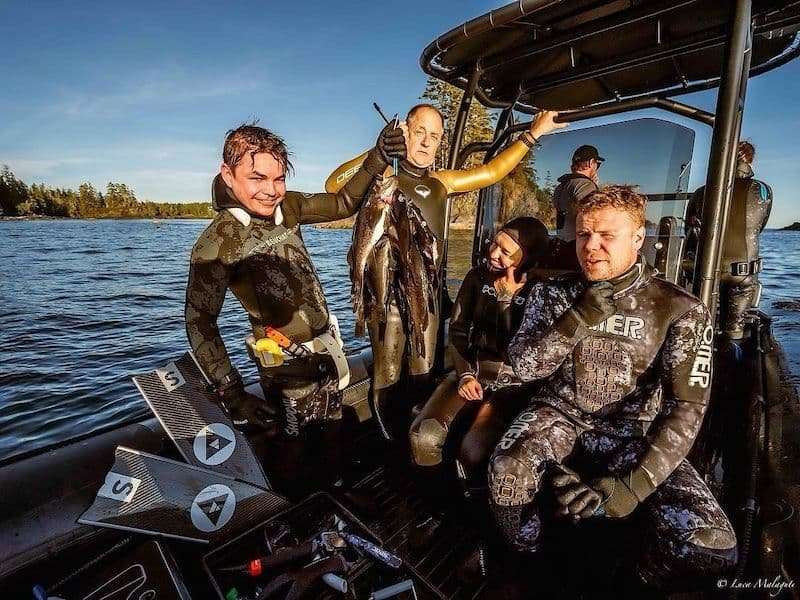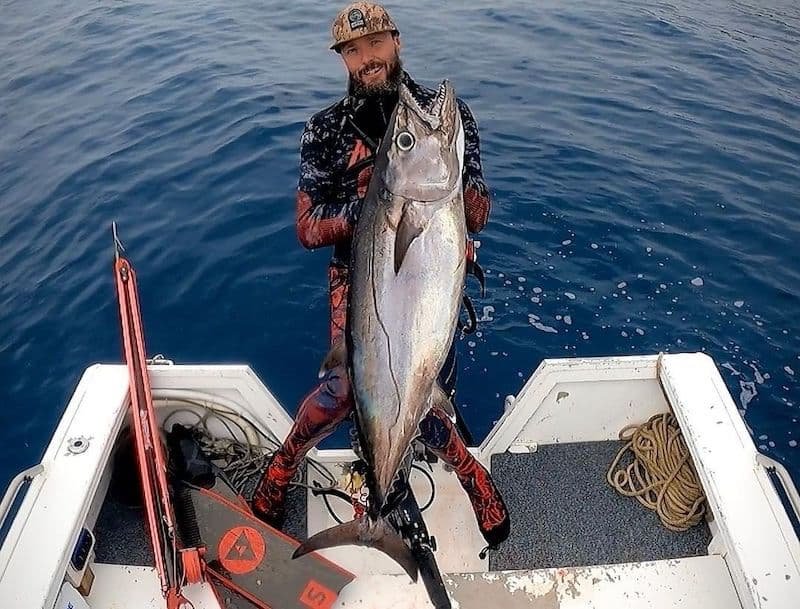
 Roni Essex
Freediver, Spearo, Creator
Roni Essex
Freediver, Spearo, Creator

 Roni Essex
Freediver, Spearo, Creator
Roni Essex
Freediver, Spearo, Creator
Spearfishing charters provide a guided experience for individuals or groups interested in the sport of spearfishing. These charters typically offer a range of services and amenities to enhance the overall experience. Are they worth the money?
One of the key offerings provided by spearfishing charters is access to experienced and knowledgeable guides. These guides are typically seasoned professionals with a deep understanding of the local waters, marine life, and spearfishing techniques. Their expertise ensures that participants, regardless of their skill level, can have a safe and enjoyable spearfishing experience.
Safety and Education: Experienced spearfishing guides prioritize safety above all else. They conduct thorough briefings before the excursion, covering essential safety protocols, equipment usage, and emergency procedures. This ensures that participants are well-informed and equipped to handle the challenges of spearfishing in different conditions. Guides also educate participants on the local marine environment, including the types of fish and potential hazards, contributing to a more enriching experience.
Location Knowledge: Guides possess an in-depth understanding of the best spearfishing spots in the area. They are familiar with the migratory patterns of fish, underwater topography, and optimal conditions for successful spearfishing. This expertise is invaluable, as it increases the chances of participants encountering a variety of marine species and enjoying a productive and fulfilling spearfishing adventure.

Technique Enhancement: Whether you are a beginner or an experienced spearfisher, guides can provide valuable insights and tips to improve your technique. They observe participants in action, offering personalized advice on breath-holding, stalking fish, and making accurate shots. This guidance can significantly enhance the overall experience and help participants become more skilled and confident spearfishers.
Environmental Stewardship: Many spearfishing guides are passionate about marine conservation and sustainable fishing practices. They educate participants on ethical and responsible spearfishing, promoting the importance of preserving the underwater ecosystem. Guides often emphasize selective targeting, adherence to local fishing regulations, and respect for marine life, fostering a sense of environmental stewardship among participants.
Equipment Assistance: Guides are well-versed in the various spearfishing equipment available and can provide assistance in choosing the right gear based on individual preferences and skill levels. They ensure that all equipment is properly maintained and in good working condition, minimizing the risk of malfunctions during the excursion.

Safety is paramount on any spearfishing charter, and a comprehensive safety briefing is a crucial element provided by experienced guides. These briefings are typically conducted before the spearfishing excursion begins and cover various aspects to ensure the well-being of participants throughout the adventure.
Introduction to Equipment: Guides start by introducing participants to the essential spearfishing equipment, including masks, snorkels, fins, wetsuits, weight belts, and, of course, the speargun. They explain the purpose and proper usage of each item, emphasizing the importance of familiarity and comfort with the gear. This ensures that participants are well-prepared and can use their equipment effectively in the underwater environment.
Buoyancy Control and Equalization: Guides provide instructions on maintaining proper buoyancy and mastering equalization techniques. Understanding how to control buoyancy is crucial for a safe and enjoyable spearfishing experience, while proper equalization helps prevent ear injuries during descents and ascents. Guides often demonstrate these techniques and allow participants to practice before heading into the water.
Underwater Communication: Effective communication is key when submerged in the water. Guides educate participants on underwater signals and hand gestures to facilitate communication between the group. This includes signals for safety concerns, spotting marine life, or indicating the need to return to the surface. Clear communication enhances the overall safety and coordination of the spearfishing expedition.

Marine Life Awareness: Guides provide information about the local marine life, emphasizing which species are safe to target and which should be avoided due to conservation efforts or potential dangers. Understanding the behavior of different marine animals helps participants avoid unnecessary risks and contributes to the responsible and ethical practice of spearfishing.
Emergency Procedures: A significant portion of the safety briefing is dedicated to emergency procedures. Guides explain what to do in case of equipment malfunctions, unexpected weather changes, or medical emergencies. This includes procedures for buddy assistance, surfacing safely, and seeking immediate help if needed. Guides often carry safety equipment such as first aid kits, oxygen kits, and communication devices to respond to emergencies effectively.
Weather and Sea Conditions: Guides provide information on the current weather conditions and sea state. They discuss the potential impact of these factors on the safety of the expedition and make informed decisions on whether it is safe to proceed with the planned spearfishing trip. This ensures that participants are aware of any potential risks associated with the weather and can adjust their expectations accordingly.
A thorough safety briefing sets the foundation for a secure spearfishing experience, instilling confidence in participants and enabling them to enjoy the underwater world responsibly. Participants are encouraged to actively engage in the briefing, asking questions and seeking clarification to ensure a clear understanding of the safety protocols in place.